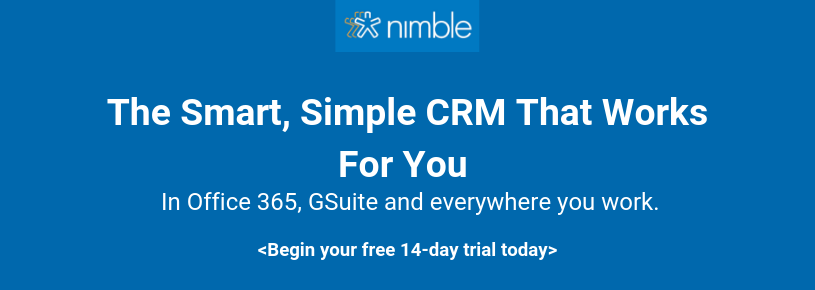Google Search Console is a powerful tool. One cannot overlook the diverse ‘search’ data that it provides.
Constant analysis of the search console data can help your website climb the top ranks progressively and boost its online visibility. However, to enjoy the benefits, you must upgrade your SEO strategies accordingly, and for that, you need to understand how the Google Search Console works.
In this post, you will find all the information you need about the new Google Search Console from basic to a complete walkthrough.
So, let’s begin.
What is Google Search Console?
Google Search Console (previously called Google Webmaster Tools) is a free service offered by Google to all the webmasters. Through Google Search Console, webmasters can keep a check on the indexing status of their domain and sub-domains. Also, the console provides webmasters with diverse data on your target keywords and their rankings along with the backlink data.
Author’s Note: You can use the keyword data provided by Google Search Console for carrying out useful keyword research.
However, comprehensive keyword and backlink data are not the only reasons for using Google Search Console.
Here are four more:
Why Should You Use Google Search Console?
1. Know About Your Website’s Mobile Compatibility
In Google Search Console, there’s a separate section that deals with Mobile Usability. The section highlights crawl reports related to your site’s mobile compatibility that is divided into two parts:
- Valid
The valid report contains the total number of pages that are compatible with mobile devices and have no or minimum mobile usability issues.
- Error
The error report includes those pages of your site that are incompatible with mobile devices.
The console provides you with a list of errors that concern the mobile usability of your website.
2. Seamless Integration With Google Analytics
Both Google Analytics and Google Search Console serve different purposes and provide different data.
Based on the similar understanding and to provide you with all the data on your website at one place, Google offers you the option of integrating Google Search Console with Google Analytics for a seamless data analysis.
3. Disavowing Links
Disavowing links is the exclusive feature of Google Search Console. When a spammy domain links to your website and does not remove the link even after constant reminders, you can fix that issue by uploading a certain file to the console’s database. That file has the spammy domain’s URL followed by a short description.
Once the file is uploaded, Google will not count that particular link during the crawl; this will maintain your domain’s credibility and its authority as well.
Such links are called toxic links and every webmaster needs to have a cure for that.
4. Getting Every Page Of Your Website Indexed
When certain pages of your website do not get indexed, you can create a list of those pages and upload it to the Google Search Console database.
The console will study the links, crawl them, and finally, index them. Apart from that, if you analyze the data available in the ‘Coverage’ section of the console, you will find information on crawling errors. You can fix those errors and remove existing robots.txt files and get every page of your website indexed.
You know ‘What is Google Search Console?’ and understand how beneficial it can be for your website, it is time to learn how to use the search console and utilize it to grow your business.
How To Use Google Search Console
Let’s head straight to the first point.
Adding Your Website
Begin by visiting Google Search Console and clicking on ‘Start Now’.
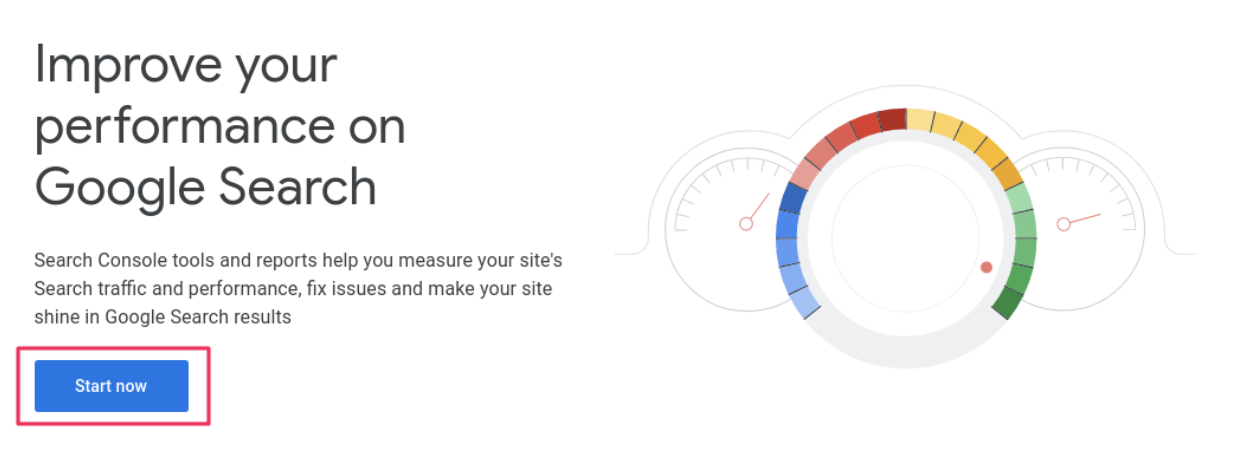
Then, log in with your Google account, which leads you to this page:
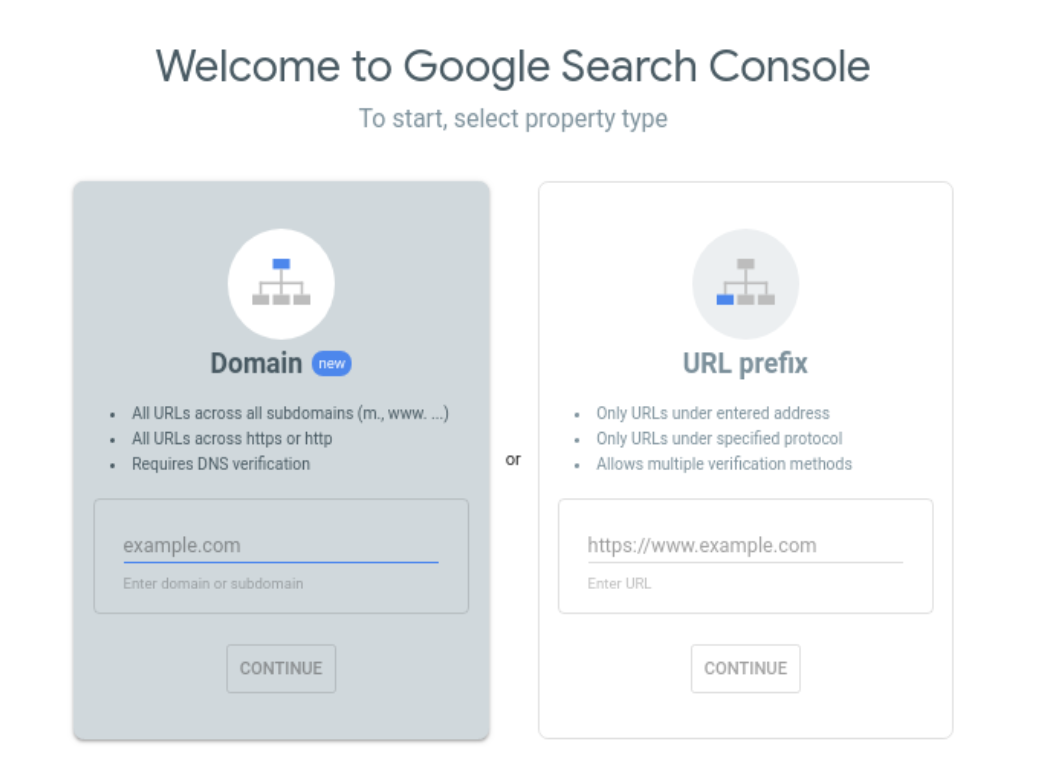
You have a choice here -either enter your domain or a particular URL. Although, I would suggest that you register your domain so Google can crawl every page connected to it.
Verifying Domain Ownership
To finish the process of adding your website to the console’s database, you need to verify that you own the submitted domain.
So, enter the domain and click on ‘Continue’, this will trigger this popup:
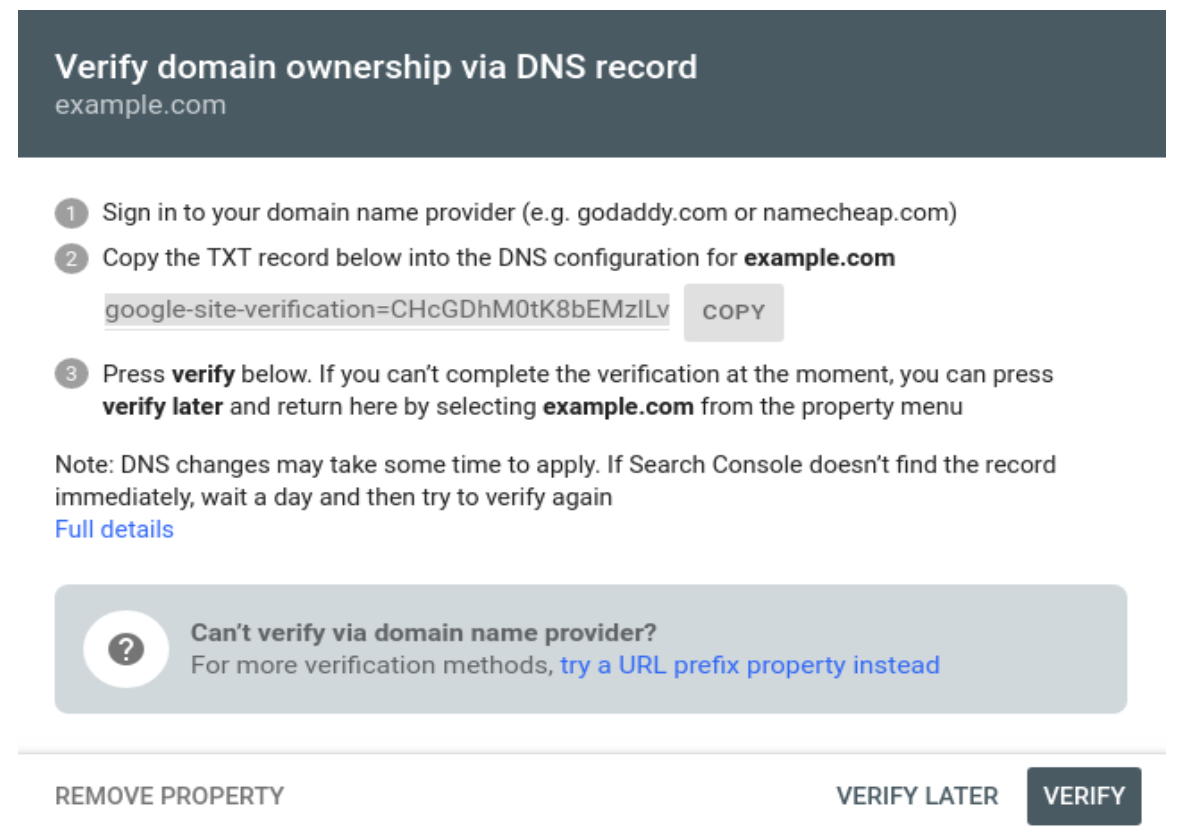
The popup will inform you about how to verify your domain.
You need to copy the TXT record generated by Google and paste it in the DNS (Domain Name System) configuration of your domain.
After pasting the TXT record, you can click on ‘Verify’, and if this message popups up:
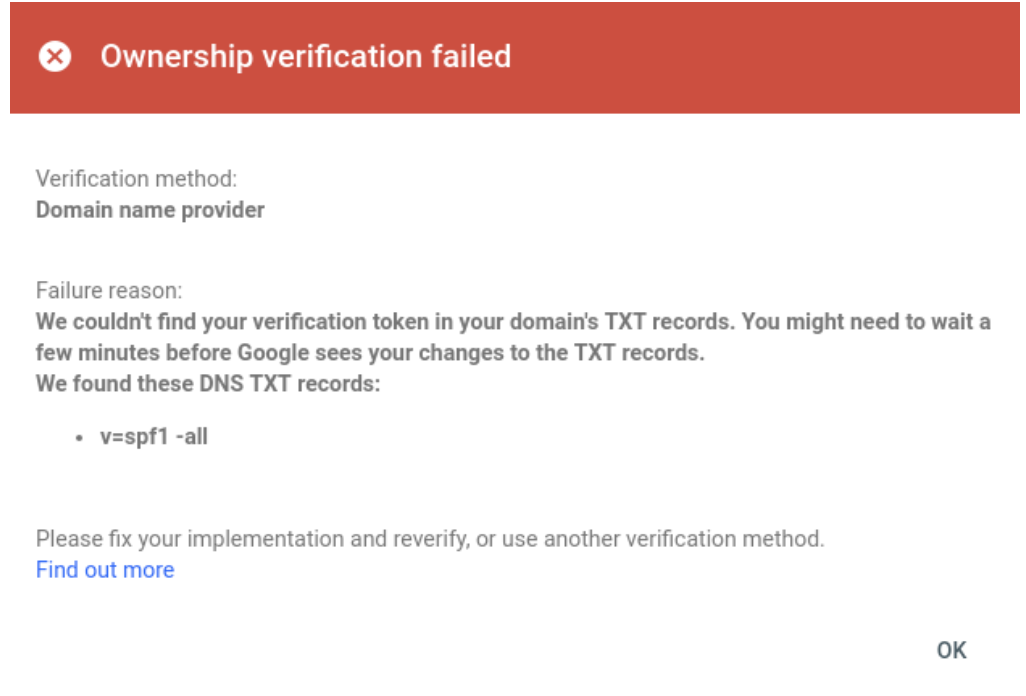
You need to check the placement of the link -whether it has been placed correctly or not. If you find no issue in the placement, then it is advised that you wait for a day or two before checking again.
Permissions: Admin Or User?
Authority of using Google Search Console is with the admin alone, but it is up to the admin’s discretion whether he/she wants to share his power with others.
For instance, only the Search Console’s admin can share his/her administrator power and authority with other people.
Furthermore, the admin can allow people to access specific sections of the Search Console.
Uploading The Sitemap to GSC Database
Sitemaps are XML files that include an extensive list of links from your domain. The purpose of sitemaps is to inform the search engines about the pages that need to be crawled.
Google search console is the only exclusive way of submitting the XML sitemaps. You can do that by selecting ‘Sitemaps’ from the sidebar menu.
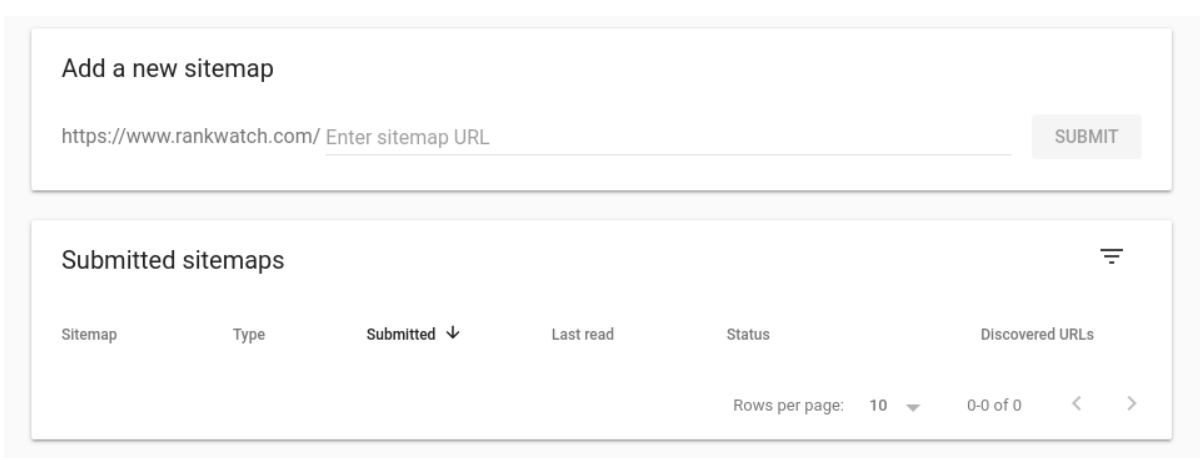
Knowing About Sections Of The Search Console
You can navigate through the various sections of the Search Console from the sidebar.
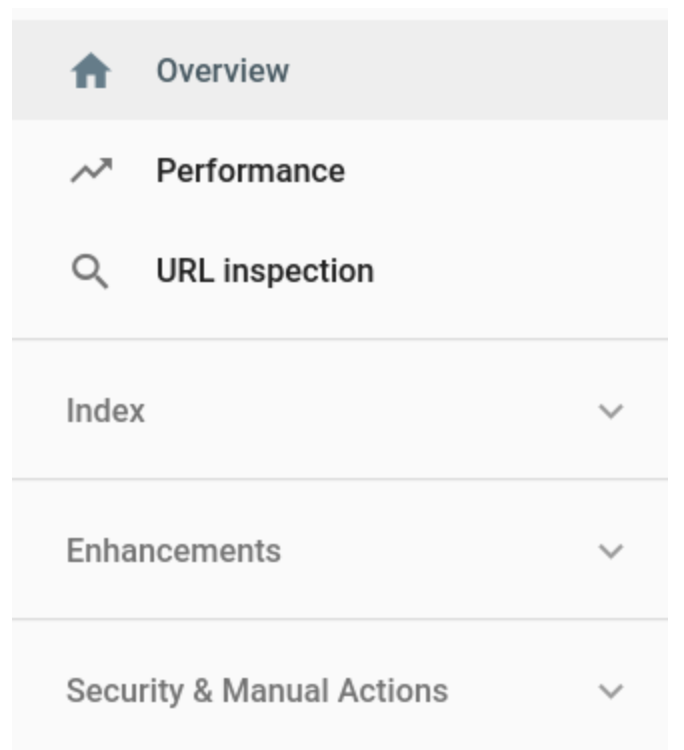
Overview:
A compilation of data concerning every section of the Google Search Console.
Performance:
This section includes information about the keywords for which you are ranking along with the total clicks, impressions, Click Through Rate, etc.
In the performance section, you can set up custom dates to extract the performance data during the specified tenure.
URL Inspection:
Analyze every URL of your site individually and monitor their search performance.
Index:
This category includes two sub-categories. One (Coverage) concerning the errors identified during the crawl, and second (Sitemaps) which allows you to upload the sitemaps.
Enhancements:
This section includes Mobile Usability -the functioning of which has already been discussed above.
Security & Manual Actions:
This includes issues that might have been committed manually and general security issues of the domain and subdomain.
Final Thoughts
When businesses start utilizing the comprehensive data of Google Search Console, they will thrive in their field. Although, you must refrain from using any blackhat SEO techniques since they can get your site penalized (de-ranking and de-indexing of your entire website).

